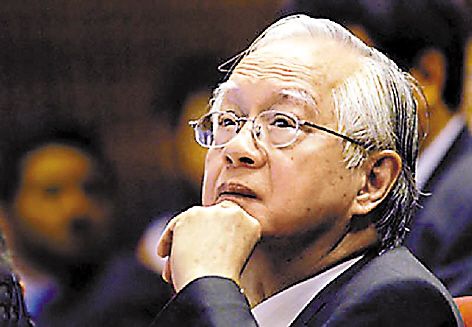
 |
| Wu Jinglian, a research fellow at the Development Research Center of the State Council. (File Photo) |
It does not matter much whether China's gross domestic product (GDP) is growing 10 percent, 8 percent, or 7 percent. The key question is what factor contributes the most to the country's GDP growth. If efficiency can contribute more to economic growth, even a lower growth rate will not be a problem.
Fundamentally speaking, there is something wrong with China's growth model.
According to its first five-year plan, the country adopted the Soviet Union's growth model in 1953, and started pouring investment into the capital-intensive heavy chemical industry in order to better promote economic growth. As a result, its investment-to-GDP ratio is now probably close to 50 percent, which can easily lead to insufficient demand and consumption.
The Chinese economy has maintained rapid growth since the launch of the reform and opening-up policy because strong external demand offset weak domestic demand.
China realized in the early 21st century that it must shift from the investment- and export-driven growth model to a new technology- and efficiency-driven model.
If the country fails to increase the contribution of productivity to economic growth, it will have to increase investment to boost growth, which will drive up the investment-to-GDP ratio and lead to a vicious circle. The higher the investment-to-GDP ratio is, the lower household consumption rate is, and the more insufficient demand is. In order to boost demand, it may further increase investment, which will only make demand more insufficient.
In the long run, China urgently needs to transform its economic growth model and increase the contribution of technological progress and efficiency enhancement to economic growth. Only in this way can it maintain reasonable and moderate economic growth.
 |














 10th China Int'l Auto Exhibition to be held in Guangzhou
10th China Int'l Auto Exhibition to be held in Guangzhou


![]()
